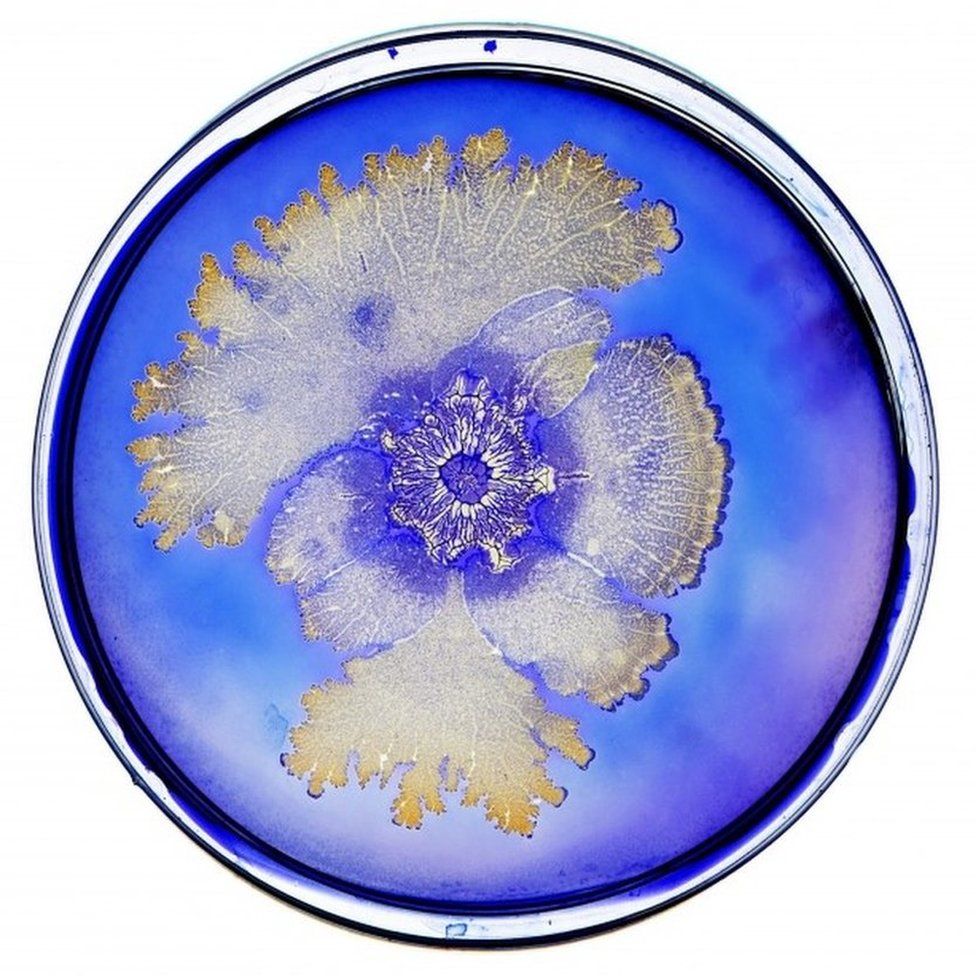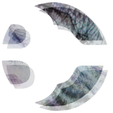|
A On Friday 19th October the University of Oxford's Museum of Natural History held its inaugural Lates night, which titled 'Uncultured' celebrated the opening of its Bacterial World exhibition. Situated in the heart of the city, the museum was abuzz with microbial-themed activities of myriad kind, including a 92ft long E.coli installation and glassworks by Luke Jerram; geological fossils evidencing how bacteria oxygenated Earth 2.4 billion years ago and further exhibits on loan from the Wellcome Collection, Yale Peabody Museum of Natural History, the Pitt Rivers Museum, and the Natural History Museum, London; Jazz pianist Martin Pickett, who musically interpreted films of bacterial growth, reproduction, and swimming; various visual arts workshops exploring techniques and technologies to print/draw/model your own bacteria; a bacterial bistro where participants learnt how bacteria are used in food production, preservation, and flavouring; and several talks and discussions, of which the highlight was 'Wonders of the Microbial World', a lecture by Harvard University's Scott Chimileski and Roberto Kolter. Taking the audience on a tour of their various in natura and in vitro interrogations of bacterial life forms and their history, geography, architecture, and more, Chimileski and Kolter shared a sumptuous selection of imagery, much of it from their new book, 'Life at the Edge of Sight: A Photographic Exploration of the Microbial World'. Running until May 28th 2019, Bacterial World is supported by an ongoing series of talks, workshops tours, and other events, which explore subjects as diverse as the origin of life on Earth, symbiosis between bacteria, plants and animals, microbial impact both good and bad on humans past, present, and possible future, and even a 'Party in a Petri' dish where the museum halls will be decked with microbial themed carols, quizzes, games, talks and more. Although, by comparison to the Natural History Museum, London, the museum is small, it's permanent collection is small, but perfectly formed. Items of particular note include its fossil record, which elegantly documents the evolution of life, and its gemstone and mineral collections. A visit comes highly recommended! Find out more at: https://oumnh.ox.ac.uk/
0 Comments
Your comment will be posted after it is approved.
Leave a Reply. |
AuthorMelissa Sterry, PhD, chartered design scientist, systems theorist, biofuturist, and serial founder inc. Bionic City® Bionic CityAsking the question "how would nature design a city" since 2010.
Archives
October 2023
Categories#bionics
#biotech #biodesign #bioscience #biomimetics #biotechnology #bioengineering #bioinnovation #bioaesthetics #biorevolution #bioenterprise #biosystems #biocreative #biofuturism #biofutures #biocentric #biofacture #biotecture #biovation #biofiction #biourban #biocities #biolab #bioart #STEM
#STEAM #STEAMED #STEMcomms #STEAMcomms #STEAMEDcomms © Bioratorium Limited & Melissa Sterry
2021 All Rights Reserved |

 RSS Feed
RSS Feed

